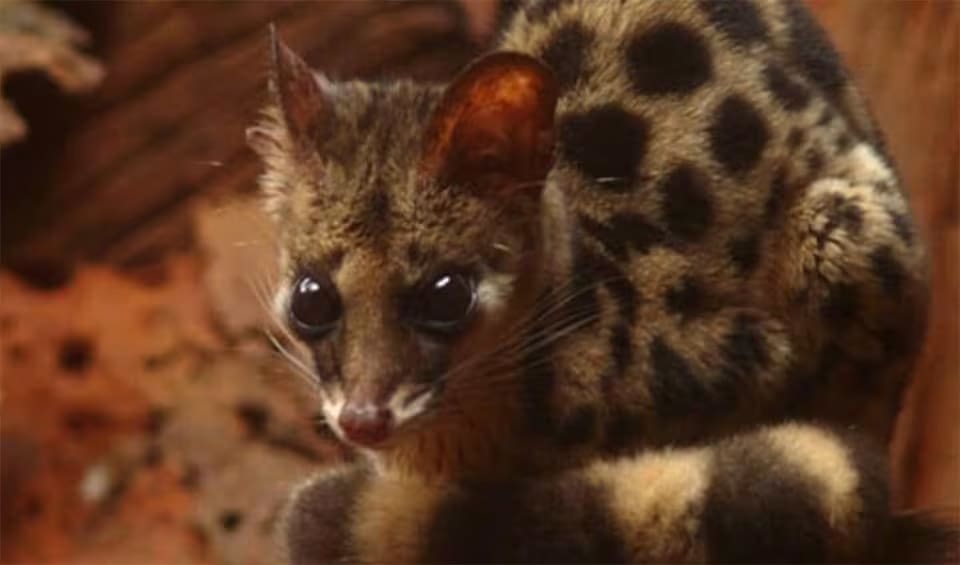Belonging to the Asiatic linsangs, it represents a fascinating and elusive group of small carnivores native to Southeast Asia’s lush, evergreen tropical forests. Resembling small, slender cats with strikingly beautiful coats, Asiatic linsangs are marked by their unique and captivating appearance.
These creatures are known for their solitary nature, preferring a life of seclusion within the dense canopy of the rainforest. Despite this preference for solitude, linsangs exhibit remarkable adaptability in their hunting habits. While they are primarily arboreal, adept at navigating the complex network of branches with their agile bodies, they also venture to the forest floor in search of prey. This versatility in habitat use highlights their opportunistic feeding behavior and skill as predators.
Their hunting technique is a testament to their agility and precision, as they can deftly capture nimble prey in the trees and on the ground. The Spotted Linsang’s slender body, long tail, and sharp claws are perfectly adapted for this dual lifestyle, allowing for balance and grip in the trees and swift movements on the ground.
Due to their secretive and nocturnal nature, detailed studies on Asiatic linsangs are challenging, leading to a scarcity of comprehensive information about their behavior, reproduction, and social structures. However, observations have revealed that they take refuge in the hollows of tree trunks, creating nest-like structures lined with dry leaves and twigs. This behavior provides insight into their nesting habits and underscores their dependence on a healthy forest ecosystem for shelter.
Distribution
 Bhutan
Bhutan Cambodia
Cambodia China
China India
India Laos
Laos Myanmar
Myanmar Nepal
Nepal Thailand
Thailand Vietnam
VietnamAnything we've missed?
Help us improve this page by suggesting edits. Glory never dies!
Suggest an editGet to know me
Terrestrial / Aquatic
Altricial / Precocial
Polygamous / Monogamous
Dimorphic (size) / Monomorphic
Active: Diurnal / Nocturnal
Social behavior: Solitary / Pack / Herd
Diet: Carnivore / Herbivore / Omnivore / Piscivorous / Insectivore
Migratory: Yes / No
Domesticated: Yes / No
Dangerous: Yes / No




